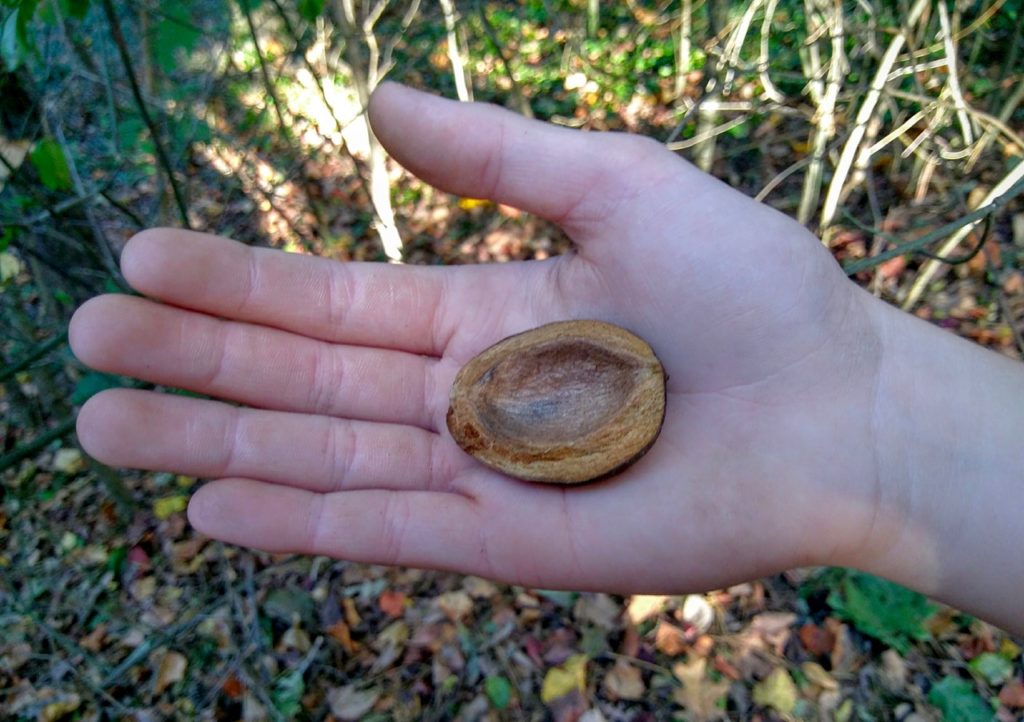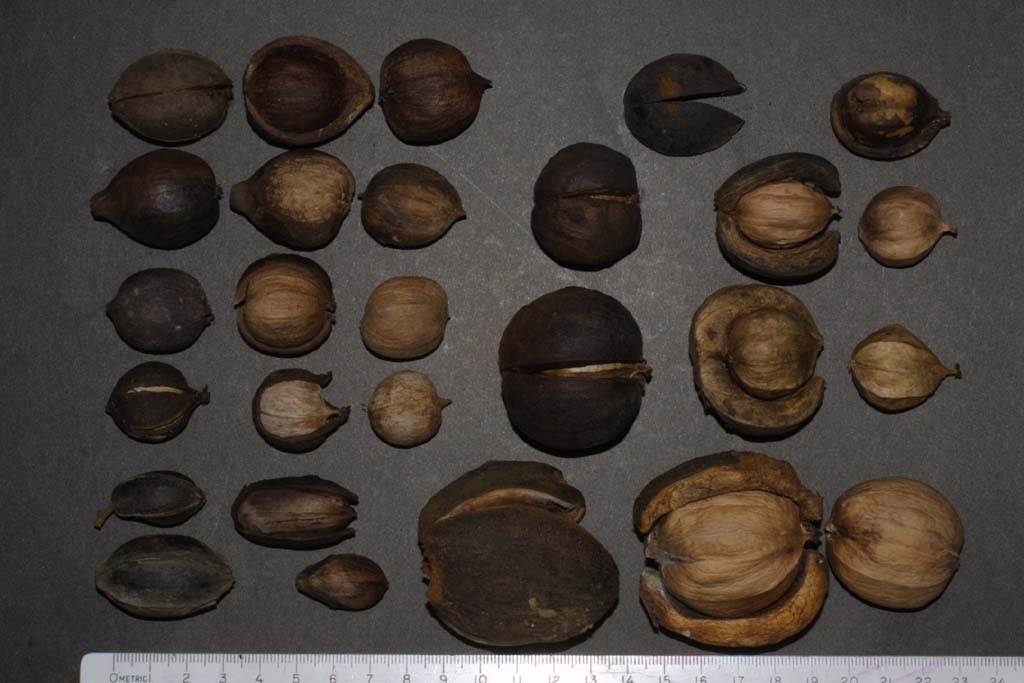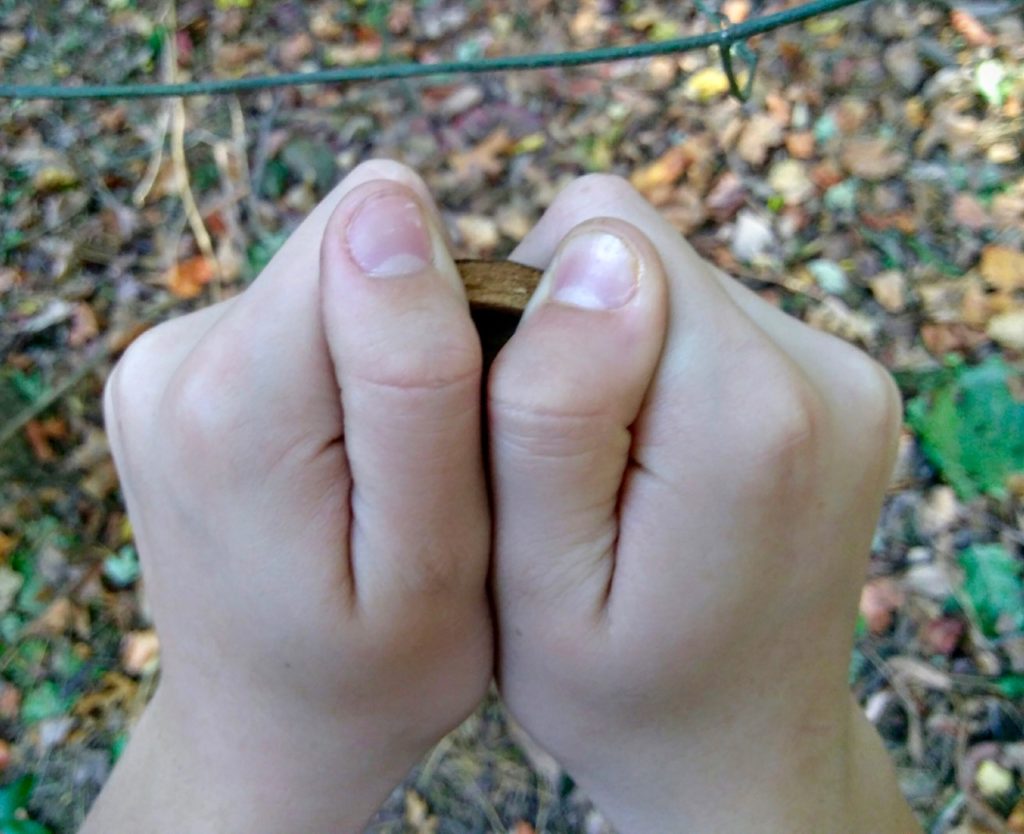While enjoying some much needed alone time this past weekend in the Chattahoochee National Forest, I was cutting through a stretch of woods with tulip tree, white pine, hickory, and oak. As I usually do, I picked up a large acorn cap for a whistle. Even though it’s been decades since my mother taught me how to use this ready made whistle of an acorn cap, as well as a blade of grass, it never gets old!

Hickory nut husk picked up off the forest floor ready to be used as a whistle just like the infamous acorn cap.
In searching for a better cap than my first pick, I was drawn to an especially large hickory nut among the fall leaf litter. Perhaps it was because I had whistles on my mind, but when I pulled the husk off the hickory nut, it’s bowl like shape gave me the idea. Holding it sideways so to speak so it’s length went across my hands, and then forming my hands just like when using an acorn cap, to my pleasant surprise it worked great as a whistle too!
Interestingly, I don’t recall ever seeing the husk of a hickory nut used as a whistle in any outdoor literature — a quick internet search didn’t provide any results either. Should you know of any, please share. Even if it is not in print anywhere, I can’t imagine this had to have been done in the past.
Nonetheless, please be aware that not all hickory nuts are the same, some are much larger than others and you will need a larger husk for the bowl and so that your thumbs can fit the end that may flares up depending on the species. You may be able to make a husk work by shaving the ends down with your knife.

Variety of hickory nuts in the Southeastern U.S. Source and more information on hickory nut varieties, Vanderbilt University.
Whistles are awesome!
Anytime my family is out and about, we all have a whistle. Not only for emergencies, but we regularly use them to communicate; especially near a large stream in the Cohutta Wilderness where frequently we get spread out and it is difficult to hear over the running water. This is our simple system:
- 1 whistle blast – Where are you?
- 2 whistle blasts – I am here.
- 3 whistle blasts – Emergency, the universal distress signal.
Whistles have multiple advantages. First and foremost, they work longer distances than your voice, regardless of the environment, weather, or elevation. They also save energy and moisture compared to simply yelling. And as everyone knows, eventually your voice wears out whereas you could blow a whistle repeatedly for a very long time.
Woods Whistle vs Modern
While these natural woods whistles are fun and work in a pinch, they should not be a replacement in you or your family member’s survival kit — which should include multiple ways for you to signal (mirror, flashlight, glowstick, etc.). Several reasons not to rely on a ‘natural’ whistle for an emergency is they are not as loud, require two hands, the pitch fluctuates, and they are not as durable as a modern whistle.
A brightly-colored pea-less whistle made of plastic is highly recommended. Bright-colored so it can be easily found. Plastic (vs. metal) so it’s less likely to freeze to your lips. Pea-less, as depending on the pea, it could become waterlogged or even freeze in place in wet/cold environments. And finally, of a design and quality that is meant for signalling.
More information on whistles in the video below from Master Woodsman Mors Kochanski:
https://www.youtube.com/watch?v=n6kdoNhwOHU



4 Responses to Readymade Woods Whistles